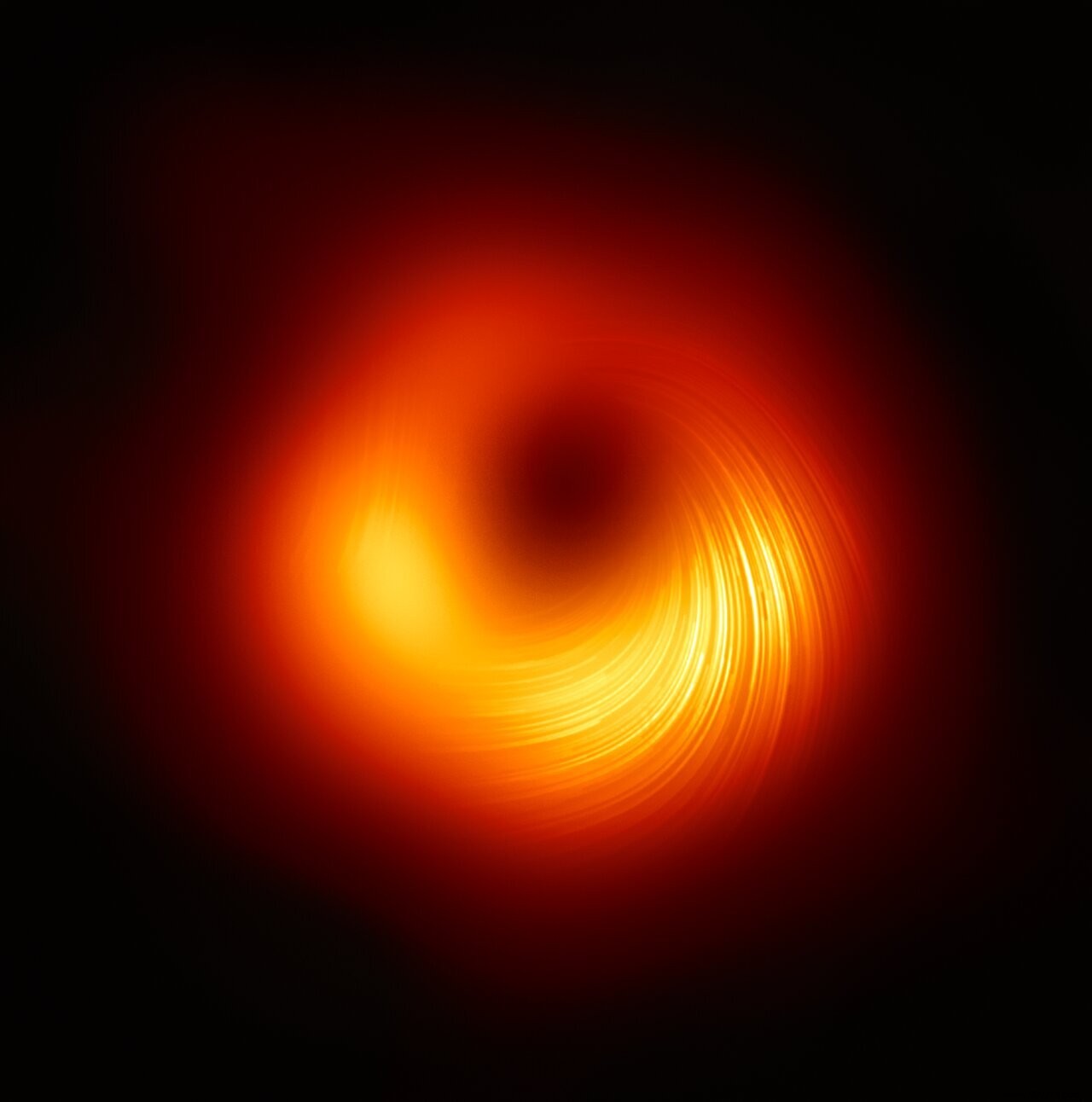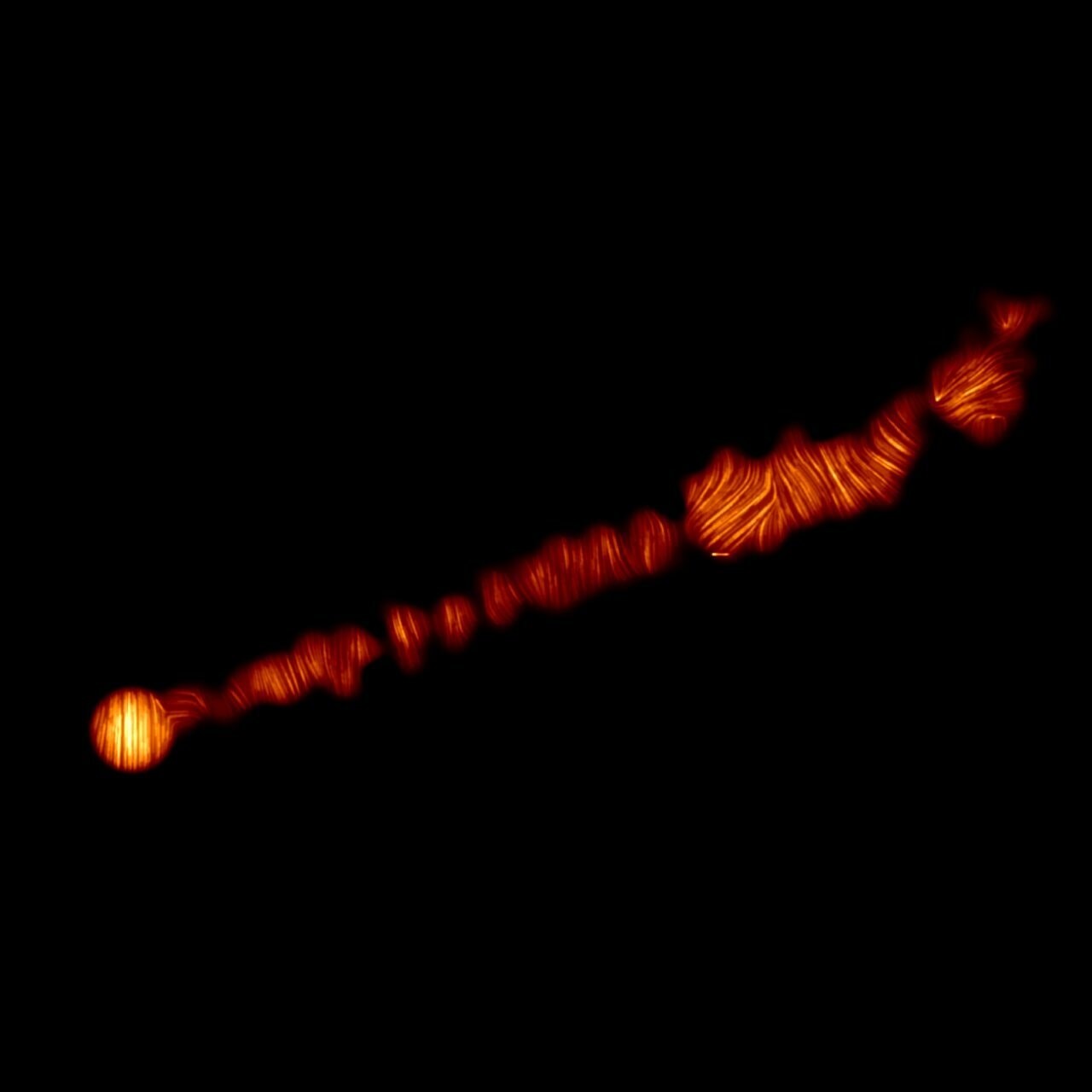Two years ago, the Event Horizon Telescope collaboration revealed the incredible first-ever image of a black hole's shadow. These same researchers have just published a new portrait of the object, revealing new details related to its magnetic field.
M87 is a black hole 6.5 billion times more massive than the sun found in the center of a huge elliptical galaxy about 55 million light-years from Earth in the constellation Virgo. Two years ago, an international team of researchers gave us the first-ever image of this black hole, revealing a fuzzy "smoke ring", just as Albert Einstein's equations predicted a century ago. .
This same group has spent the past two years extracting more data from their observations. For this work, they focused on the polarization of waves that could reveal the shape of the magnetic fields found in the hot gas swirling around the object.
Light is a wave that generally "trembles" in all directions. Polarized light waves are light waves whose vibrations occur on a single plane. Light polarizes when it passes through certain filters, such as sunglasses, for example, but also when it is emitted by hot regions of space where magnetic fields reside. Polarized, the light only oscillates in a particular direction . In nature, interactions between light and matter can influence this direction, and magnetic fields are one of these interactions.
Seen through the radio equivalent of polarized sunglasses, M87 appears to us today as a pumping vortex of interstellar matter.
The newly processed image allows astronomers to trace these fields back to their origins, in a hot, chaotic ring of plasma about 30 billion kilometers away in diameter (four times wider than the orbit of Pluto).

Thanks to this new portrait, researchers are giving themselves the means to study its magnetic field. These observations can in turn help astronomers understand how phenomena such as cosmic jets form .
Black holes are real pits found here and there capable of anything and everything. Paradoxically, these objects are also the brightest in the universe. Material that falls into a black hole is heated as it swirls around the drain. Most of this material falls into the black hole, but some is expelled. Astronomers do not know how all this energy arises and is mobilized, hence the importance of this new portrait.
"These relativistic jets are some of nature's most extreme phenomena, combining gravity and hot gases and magnetic fields to produce a beam that shoots through a galaxy “, recalls Daniel Holz, of the University of Chicago. "It's exciting that EHT is helping us learn more about what's going on at the heart of these jets that are known to take root very close to the 'surface' of a black hole “.
Janna Levin, an astrophysicist at Barnard College of Columbia University, also called the results "exciting ". And for good reason, we finally have details on how black holes can create “ray guns spanning thousands of light-years”. “.

Incidentally, this work has also enabled astronomers to 'estimate the rate at which this black hole feeds off its surroundings . Apparently, he's not terribly hungry; the black hole eats a "paltry" thousandth of the sun's mass per year. Yet it is enough to project relativistic jets spanning thousands of light-years, and bright enough for us to observe.
Details of this work are published in The Astrophysical Journal here and here.